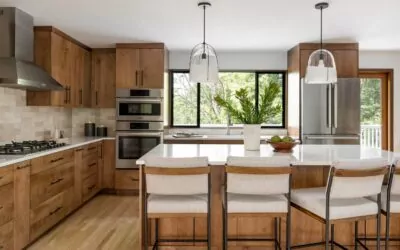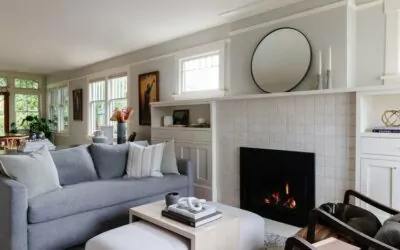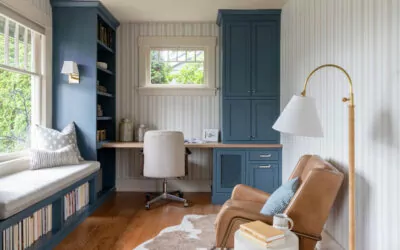Designer: September Workshop
In this day and age with e-commerce being what it is, there is a constant struggle between clients wanting to find the best deal when shopping for furniture and interior designers wanting to provide their clients with quality products. Now more than ever consumers are shopping online for big furniture pieces like sofas and tables in hopes of finding the most bang for their buck. And who can blame them? They are saving money, shipping is probably free, they can return it if they don’t like it, and the lead times usually aren’t as long as custom furniture pieces. But 100% of the time they are getting what they pay for. It may not be obvious by looking at the online picture or even seeing the furniture in person when it’s fresh out of the box. As it becomes used, however – even within the first year – the everyday wear and tear becomes noticeable and the construction of the furniture begins to break down. This should be reason enough to pay more for a handmade piece that will last decades but unfortunately that’s not always true.
Ok, so let me ask you a question. If you were to buy a sofa from a big box retail store (I won’t name any names) and after a few years of owning it the cushions start to sink and the fabric starts to pill so you decide to get rid of it – where do you think it goes once you take it to the dump? IN. THE. LAND. FILL. Obviously, the most eco-friendly thing to do is to resell it or donate but even then it won’t live much longer in the hands of someone else. All those pieces of furniture sit crushed up forever, the materials rotting into the ground and never being recycled. It is a part of a designer’s job to make environmentally conscious decisions because we love our planet and want to take care of it! We feel responsible for recommending products that are sustainably sourced – socially, environmentally, and ethically.
As interior designers, we put a lot of leg work in to sourcing vendors that produce quality pieces. We go to markets around the country where we can see, feel, and test out furniture so when the time comes to present furniture recommendations to a client they can trust us when we say it’s comfortable. When we go to High Point Market in North Carolina we are able to tour manufacturing facilities where we see each furniture piece being handmade. We get to meet the people in these facilities who are well taken care of and happy. It’s important for us to ensure the vendors we source are sustainable – socially, environmentally, and ethically.
How can you tell when a furniture piece, such as a sofa, is quality made? If you’ve ever heard of the term “8 way hand tied” you’re one step ahead of me. To put it simply, 8 way hand tied is a type of construction method for furniture that achieves comfort and support. It involves a special kind of coil spring installed in the base of the sofa and then string is tied in different directions connecting all the springs together to create a solid foundation for the cushions. It is thought to be the “gold standard” in terms of upholstery construction – and we agree! You can feel and see the difference over years of use when comparing an 8 way hand tied sofa to one made with sinuous springs or similar. I have provided a few pictures below to give you a better visual of how 8 way hand tied sofas are made.



Soo… What do you think? Pretty eye opening, huh? It can be hard conversation to have but trust me when I saw we ALWAYS have our clients best interests in mind. And I’m not saying you need to drop everything you are doing and go out and buy all new furniture because it’s not 8 way hand tied or sustainably sourced. I’m just saying that this is a topic that we care deeply about and want to share with you. It’s something to keep in mind the next time you are purchasing furniture or working with a designer.
Images provided by our dear friend Renate Ruby, owner of Adorn House (@rruby_adorn)



